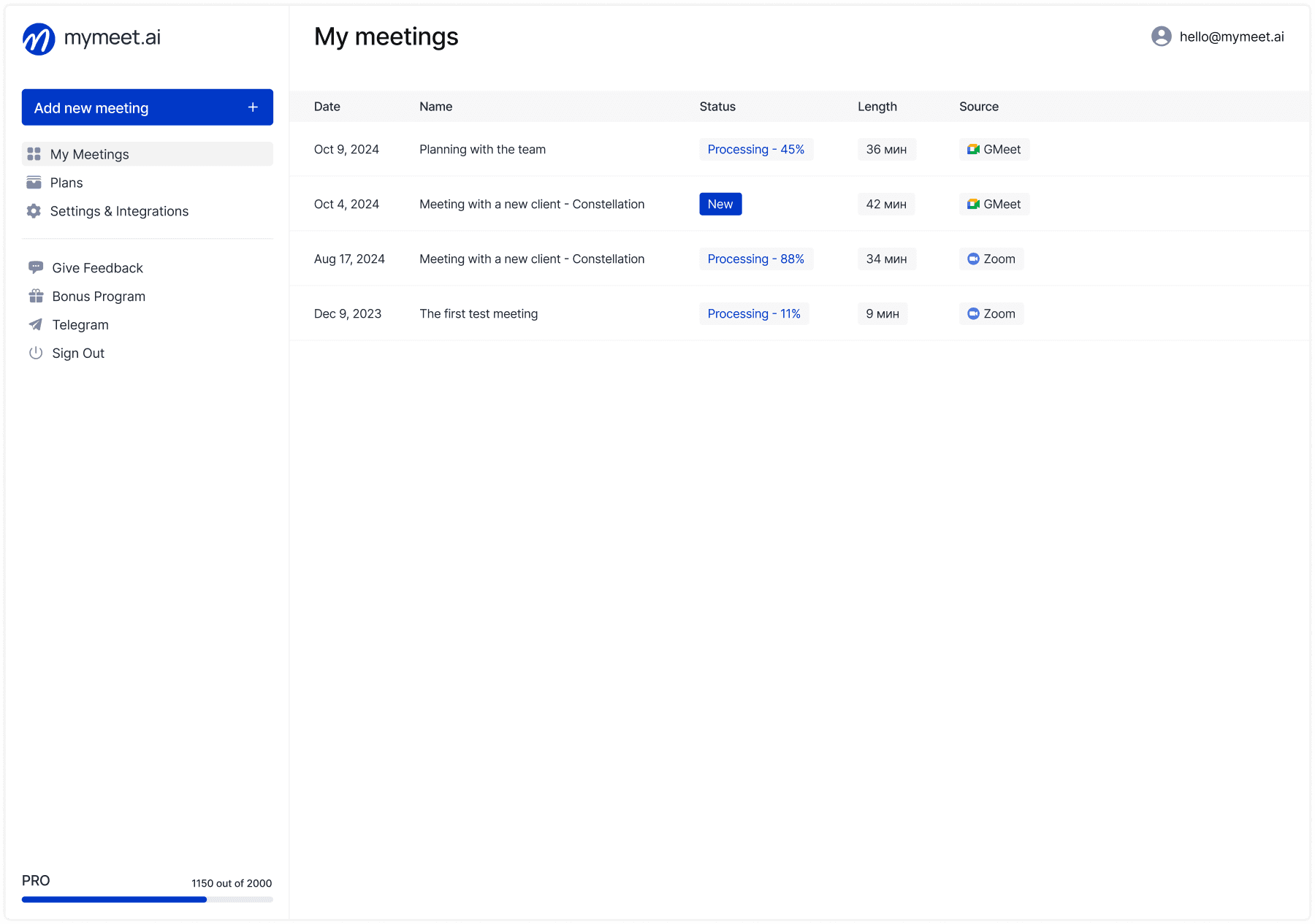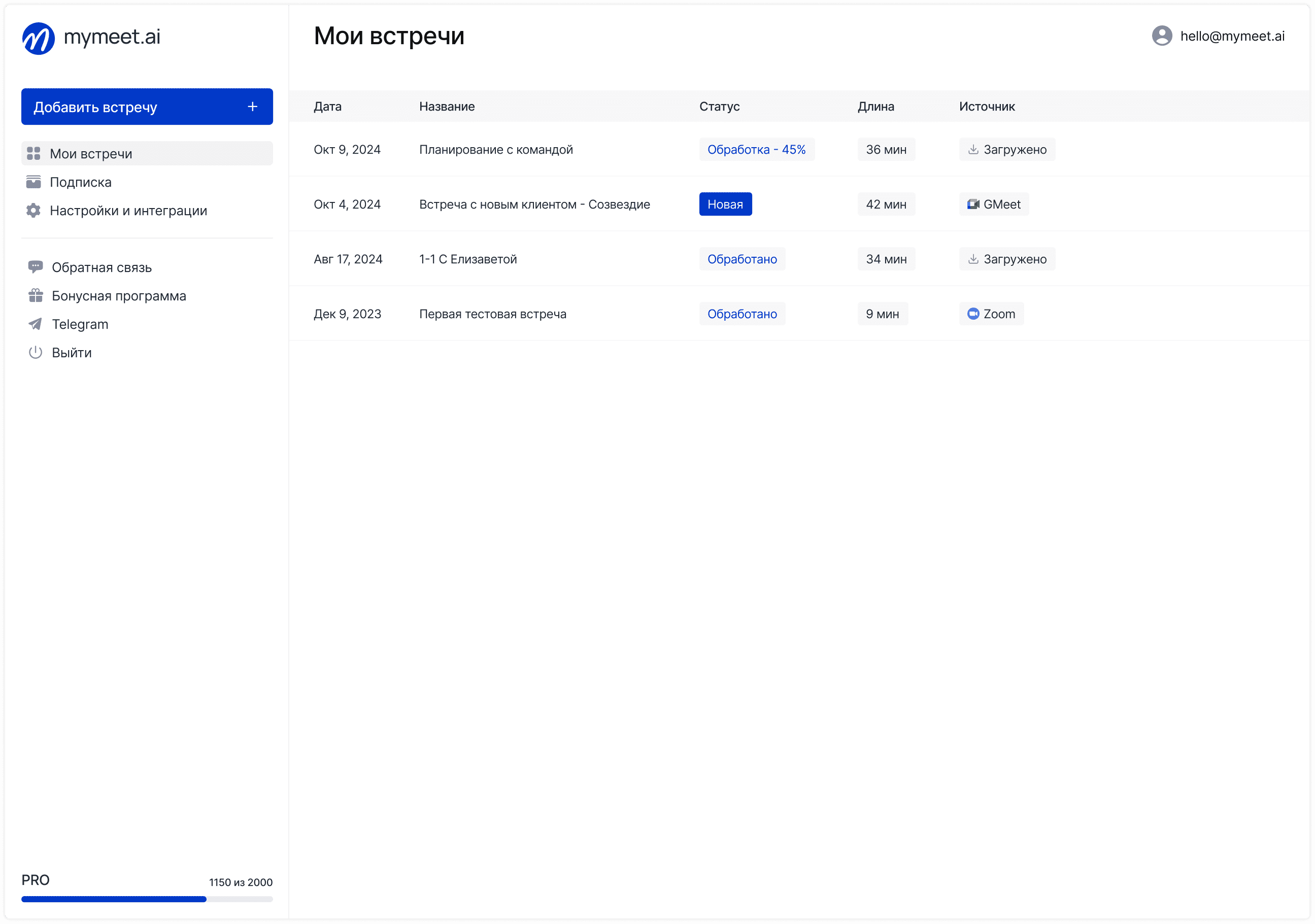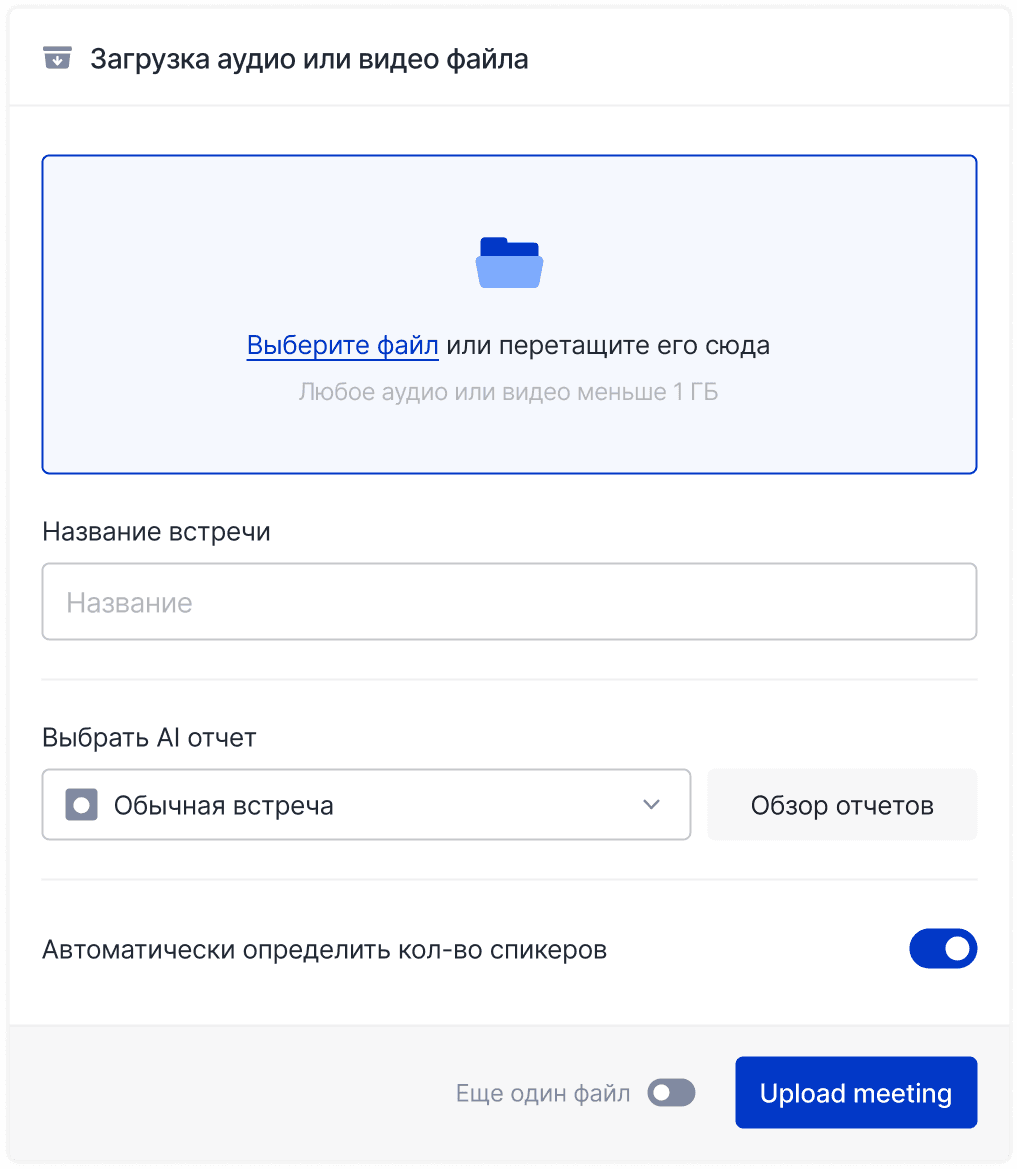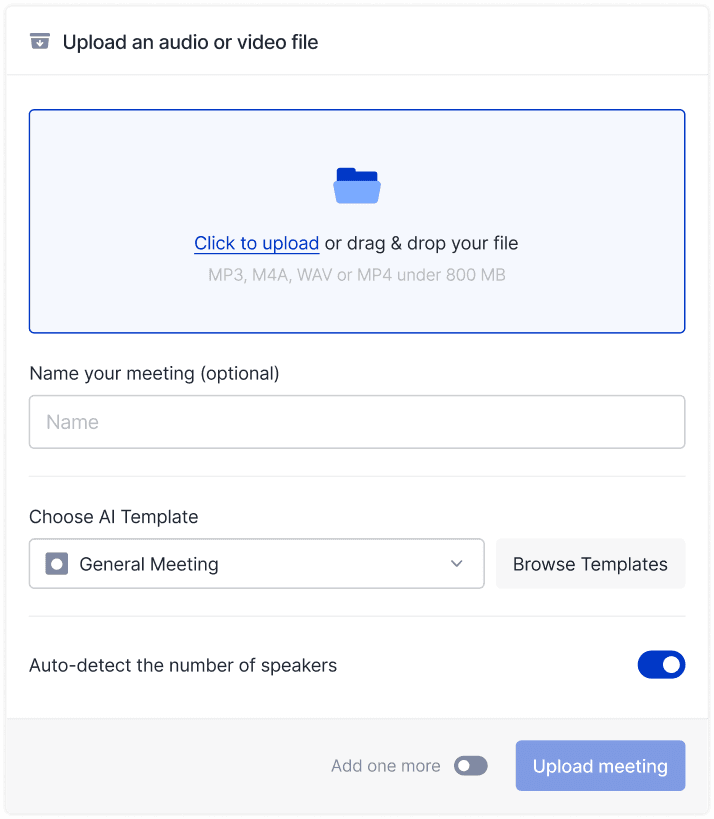Task Management

Andrey Shcherbina
Mar 28, 2025
Many leaders are familiar with the feeling of wasted time after yet another aimless, unstructured meeting where conversations go in circles and no results are achieved. Unproductive meetings have become a real problem in modern organizations.
Statistics show that the average leader spends about 23 hours per week in meetings, with 71% of managers considering most of them unproductive. In monetary terms, this translates to billions of dollars lost annually. The root cause is often the same—the absence of a well-thought-out team meeting agenda.
What Is a Team Meeting Agenda and Why It's Necessary
A meeting agenda is the roadmap for your meeting, defining the route, stops, and destination. A well-crafted team meeting agenda transforms the abstract idea of "let's talk about the project" into a structured plan with specific goals and expected outcomes.
A Harvard Business Review study showed that meetings with a clear agenda are 67% more productive and end with specific decisions and action plans. This trend has only intensified in recent years as many teams have transitioned to hybrid and remote work formats.
Without a clear agenda, meetings turn into endless discussions without decision-making, monologues from the loudest participants, and a source of stress for the team. In my practice, there was a case with a technology company where simply switching to structured agendas reduced the total time the team spent in meetings by 35% while simultaneously increasing employee satisfaction.
Anatomy of an Effective Agenda: Key Components
A team meeting agenda should be like a good suit—tailored to the specific situation while adhering to certain standards. Every effective team meeting agenda includes five main elements:
Basic information—date, start and end time, location, list of participants
Goals and expected outcomes—clear statement of what should be achieved
Structured topics with timing—specific issues with time allocated for discussion
Preparation materials—documents or data for preliminary review
Participant roles—moderator, note-taker, timekeeper, etc.
It's especially important to clearly articulate why the meeting is being held. For example, "By the end of the meeting, we should select a contractor for Project X and distribute tasks for the next sprint." This immediately sets the focus and allows you to evaluate the success of the meeting.
Step-by-Step Guide to Creating an Agenda for Different Types of Team Meetings
Creating an effective team meeting agenda is a process that can be adapted for different types of meetings. Each format has its own characteristics.
For Regular Status Meetings
For weekly or daily meetings, it's worth defining a permanent structure to follow. Status meetings typically include a brief update on key metrics from the leader (3-5 minutes), personal updates from participants (1-2 minutes per person), discussion of obstacles (10-15 minutes), and determining next steps (5 minutes).
For Strategic Planning Sessions
Strategic sessions require more in-depth preparation. It's necessary to determine the focus and specific question to be resolved in advance. The structure of such a meeting should include an introductory activity to set the team up for creative thinking (10-15 minutes), sequential discussion of key aspects of the problem, regular breaks for long sessions, and mandatory time for summarizing at the end (minimum 20 minutes).
For Retrospective Meetings
Retrospective meetings aim to analyze past experience and extract lessons. Here it's important to clearly define the period for analysis and use proven formats that ensure constructive feedback. Allocate time for all participants to speak, prioritize identified problems, and determine specific actions for improvement.
Agenda Templates for Various Types of Team Meetings
Here's a universal template for a weekly team meeting that can be adapted to your needs:
Time | Agenda Item | Responsible | Expected Outcome |
10:00-10:05 | Opening, agenda overview | Leader | Common understanding of meeting goals |
10:05-10:15 | Key metrics and important events | Leader | Team informed about current situation |
10:15-10:35 | Team updates (2 min per person) | All participants | Understanding of status across all areas |
10:35-10:50 | Discussion of obstacles and risks | Moderator | Identification of problems requiring solution |
10:50-11:00 | Determining tasks and next steps | Moderator | Clear action plan with responsible parties |
Sprint Planning Template
For teams working with Agile methodologies, having a structured agenda for sprint planning is critical. An effective structure includes a review of sprint goals (10 minutes), presentation and discussion of backlog items (20 minutes), team estimation of work (40 minutes), sprint formation considering team velocity (30 minutes), and defining success criteria (10 minutes).
Problem-Solving Meeting Template
When you need to solve a specific problem, the following agenda structure helps focus and arrive at a concrete result:
Problem definition (10 min)—Clear formulation of the problem and justification of its priority
Root cause analysis (20 min)—Identifying root causes using special techniques
Solution generation (20 min)—Gathering all possible approaches to the solution
Evaluation and selection of solution (20 min)—Applying criteria to choose the optimal solution
Action plan (15 min)—Defining specific steps with responsible parties and deadlines
mymeet.ai: How an AI Assistant Helps Create and Optimize Agendas

In the digital era, creating an effective team meeting agenda can be automated using AI tools. The mymeet.ai service significantly simplifies the process of preparing and conducting productive meetings.

The system analyzes previous team meetings, project context, and current tasks to suggest an optimal agenda structure with relevant items. Based on historical data, mymeet.ai recommends optimal time for discussing each item, considering the complexity of topics and the team's previous experience.

During the meeting itself, the system listens to the discussion, records key points, and reminds you to move to the next agenda item if the current discussion is running long. After the meeting concludes, a structured report is automatically created, highlighting decisions made and forming tasks with responsible parties and deadlines.

Companies using mymeet.ai for their team meetings report an 80% reduction in time spent preparing agendas and a 35% increase in meeting productivity.
Best Practices for Creating and Following an Agenda
Based on years of experience and observations of hundreds of teams, we can identify key practices that make a team meeting agenda truly effective.
Distribute the agenda in advance, at least 24 hours before the meeting, so participants have time to prepare. For complex strategic sessions, this timeframe should be increased to 3-5 days.
Practice collaborative agenda creation, involving participants in this process. This increases their interest and ensures that important topics won't be overlooked.
Apply the "2/3 + 1/3" rule—plan only 2/3 of the available time, leaving 1/3 for unforeseen discussions and questions. Meetings almost always take more time than initially planned.
Place critically important issues at the beginning of the agenda, when participants' energy and focus are at their highest. Routine updates are better left for the end or even converted to a written format.
Always allocate 5-10 minutes at the end to review decisions made and specific tasks with responsible parties and deadlines. Make sure all participants understand the meeting outcomes the same way.
How to Adapt the Agenda for Different Meeting Formats
The meeting format significantly affects the agenda structure. For virtual meetings, it's recommended to make more frequent switches between topics (every 10-15 minutes), plan interactive elements to maintain engagement, and include time to check technical aspects at the beginning.
For in-person meetings, you can use the possibilities of physical space, such as boards and sticky notes, plan group activities requiring movement and interaction, and allocate time for informal communication.
Daily standups require a strict structure with rigid timing (15-20 minutes maximum) and use of the format "What was done yesterday / What is planned today / What obstacles exist." Detailed discussions are better moved to separate meetings.
Strategic sessions need to be divided into thematic blocks of 60-90 minutes, include activities to energize the team, and mandatory plan breaks and time for reflection.
Common Mistakes When Creating an Agenda and How to Avoid Them
Even experienced leaders make typical mistakes when creating agendas for team meetings:
Overloaded agenda—Many leaders try to cram too many topics into one meeting. Solution: apply the "minus one item" rule—after creating the agenda, remove the least critical item.
Vague formulations—Agenda items like "Discussion of Project X" are too abstract. Solution: formulate items as specific questions or tasks, for example, "What 3 key risks of Project X require immediate action?"
Lack of preliminary materials—When participants come unprepared, time is spent on familiarizing themselves with the context. Solution: for each substantive item, determine materials for preliminary review and send them along with the agenda.
Ignoring different thinking styles—Agendas often don't account for diversity in the team. Solution: structure the agenda to engage various work styles, including analytical, practical, and creative thinking.
Tools for Creating and Managing Agendas
The modern market offers many solutions for working with team agendas. Specialized applications (Fellow, Hypercontext, Hugo) allow creating collective agendas and linking them to company tasks.
Mymeet.ai stands out among these tools with its focus on automating work with meetings. The service not only helps organize the agenda but also connects directly to video conferences, records them, creates a transcript, and generates an AI report with key points and tasks. This frees participants from the need to take notes and ensures that important information won't be missed.
The AI chat function in mymeet.ai allows you to ask questions about the discussion content after the meeting, quickly find the necessary fragments, and form structured conclusions. This is especially valuable when working with a large number of meetings, when details can be forgotten.
Project management systems (Asana, ClickUp, Monday.com) integrate agenda items with the system of tasks and responsibilities. Basic solutions like Google Calendar with Documents or Microsoft Teams with OneNote provide the necessary minimum for most teams.
When choosing a tool, focus on ease of use and compatibility with your team's current work systems.
Conclusion
An effective team meeting agenda is a strategic tool that significantly increases team productivity and the quality of decisions made. The key principles of a successful agenda include a clear purpose for each meeting, a structure that considers priorities, adaptation to the type of meeting and participant composition, as well as constant evaluation and improvement of the process.
Implementing structured agendas doesn't require significant resources but provides tangible returns almost immediately. Start by revising the agenda of your next regular meeting, and you'll be surprised at how quickly you'll see positive changes in team efficiency and communication quality.
FAQ: Answers to Common Questions About Team Meeting Agendas
How do you determine the optimal duration for a team meeting?
Effectiveness significantly decreases after 45-60 minutes of continuous discussion. For routine meetings, aim to fit within 30-45 minutes. For strategic sessions, plan blocks of 45-60 minutes with breaks between them.
How should you handle topics that weren't planned but arise during the meeting?
Use the "parking lot" rule—record unplanned topics in a separate list and at the end of the meeting decide how to handle them: schedule a separate discussion, delegate, or include in the next meeting's agenda.
What should you do if discussion of one agenda item runs long?
Define "warning signals" in advance—for example, if discussion of an item takes 25% more than the planned time, the moderator should offer options: quickly conclude the discussion, postpone remaining items, or schedule a separate meeting on this topic.
How do you engage less active participants in the discussion?
Include special formats in the agenda that give everyone an opportunity to speak: round-robin discussions where each person must give a brief comment, or anonymous collection of ideas followed by general discussion.
Should meetings be recorded for better agenda adherence?
Meeting recordings can be useful, but it's important to remember about confidentiality. An alternative could be appointing a "secretary" to record key decisions or using tools like mymeet.ai for automatic transcription.
Andrey Shcherbina
Mar 28, 2025








